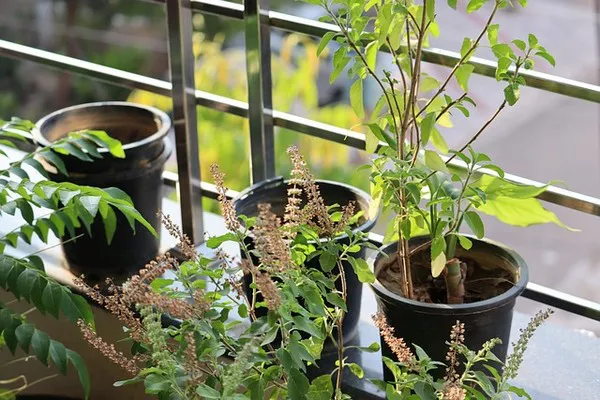Gnats, those tiny, pesky insects that hover around houseplants, can quickly become a nuisance if left unchecked. Not only are they irritating, but they can also harm your plants by feeding on roots and laying eggs in the soil. Fortunately, there are several effective methods to get rid of gnats and prevent them from returning. This comprehensive guide will explore the causes of gnat infestations, the damage they can cause, and most importantly, proven strategies to eradicate them.
Understanding Gnats and Their Impact
Gnats belong to the Diptera order of insects, characterized by their delicate appearance and preference for moist environments. Fungus gnats (Bradysia spp.) are among the most common types found in household plants. They thrive in damp soil where they lay eggs that hatch into larvae, which feed on organic matter and plant roots. Adult gnats are attracted to light and may be seen flying around plants, especially when disturbed or during watering.
The presence of gnats is not only bothersome but can also indicate underlying issues with plant care. Overwatering, poor drainage, and decaying organic material in soil are primary factors contributing to gnat infestations. Understanding these factors is crucial for effective pest management.
Identifying Gnat Infestations
Before initiating control measures, it’s essential to confirm the presence of gnats and distinguish them from other pests like fruit flies or mosquitoes. Here are key indicators of a gnat infestation:
Adult Gnats: Small, delicate flies often seen flying close to the soil or around plants, particularly when disturbed.
Larvae: Tiny, worm-like larvae found in the soil, typically white or transparent in color. They may be seen wriggling around roots or just beneath the soil surface.
Damage Symptoms: Plants may exhibit signs of stress such as wilting, yellowing leaves, or stunted growth, which can be attributed to larval feeding on roots.
Soil Conditions: Overly moist soil that remains wet for prolonged periods provides an ideal breeding ground for gnats.
Effective Strategies for Gnat Control
1. Cultural Controls
Improving cultural practices can significantly reduce gnat populations and prevent future infestations:
Adjust Watering Practices: Allow the soil to dry out slightly between waterings to discourage gnat larvae development. Ensure pots have proper drainage to prevent water accumulation.
Remove Organic Debris: Clean up fallen leaves, dead plant material, and any organic debris from the soil surface. Larvae feed on decaying organic matter, so removing it eliminates their food source.
Sterilize Soil: If feasible, replace the top layer of soil with fresh, sterile potting mix. This helps disrupt the gnat lifecycle by removing larvae and pupae.
2. Mechanical Controls
Physical methods can be effective for reducing adult gnat populations:
Yellow Sticky Traps: Place sticky traps near affected plants to capture adult gnats. Yellow traps are particularly effective as they attract the insects visually.
Vacuuming: Use a handheld vacuum to capture adult gnats flying around plants. Be thorough in vacuuming both the air around the plants and the soil surface.
3. Biological Controls
Introducing natural predators or substances harmful to gnats can provide sustainable, non-toxic pest control:
Beneficial Nematodes: These microscopic organisms can be applied to soil to target and kill gnat larvae without harming plants.
Bacillus thuringiensis (Bt): A natural bacterium that produces toxins harmful to certain insect larvae, including gnats. Available as a soil drench, it targets larvae while being safe for plants and beneficial insects.
4. Chemical Controls
When cultural, mechanical, and biological methods are insufficient, chemical treatments may be necessary:
Insecticidal Soap: Sprays containing insecticidal soap can effectively kill adult gnats on contact. Ensure the product is labeled for indoor plant use and follow application instructions carefully.
Neem Oil: A botanical insecticide that disrupts the insect’s hormonal balance and acts as a repellent. Dilute according to instructions and apply to affected plants and soil.
SEE ALSO: Flowers That Attracting Butterflies: All You Need to Know
Preventing Future Gnat Infestations
Once gnats are under control, preventive measures can help maintain a gnat-free environment:
Monitor Soil Moisture: Avoid overwatering and ensure pots have adequate drainage. Use a moisture meter if necessary to gauge soil moisture levels.
Quarantine New Plants: Inspect and quarantine new plants before introducing them to your indoor garden. This prevents introducing gnats or other pests into your established plant collection.
Maintain Cleanliness: Regularly clean plant containers, trays, and surrounding areas to eliminate potential breeding sites and organic debris.
Improve Air Circulation: Good airflow around plants discourages gnat activity. Consider using fans indoors to improve ventilation.
Conclusion
Dealing with gnat infestations requires a combination of proactive measures and persistence. By understanding the lifecycle and habits of gnats, you can effectively implement strategies to eliminate them and safeguard your plants. Whether through cultural, mechanical, biological, or chemical means, choosing the right approach depends on the severity of the infestation and your preference for eco-friendly solutions. By maintaining good plant hygiene and adjusting care practices, you can create an environment where gnats are less likely to thrive, ensuring healthier, happier plants in the long run.


